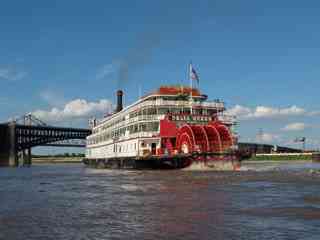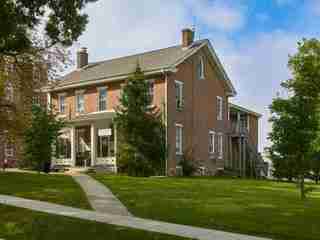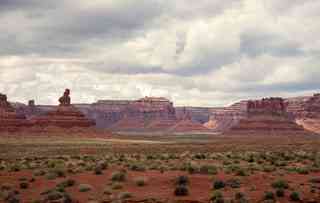These 7 Historic Sites Need to be Saved
Since 1988, the National Trust for Historic Preservation has released a list of the 11 most endangered historic places, inspiring the preservation of some of America’s most vulnerable buildings, neighborhoods, and landscapes—from the Grand Canyon to Manhattan’s Lower East Side. Each year, the organization evaluates scores of nominations to determine which sites are most threatened by development and environmental factors. “This year’s list elevates important threatened historic places in our nation’s cities,” said National Trust president Stephanie Meeks in a statement, noting that today “more than 80 percent of Americans live in urban areas.” Indeed, the 2016 compilation includes storied structures in San Francisco; Milwaukee; Tucson, Arizona; and El Paso, Texas. Tour seven of the sites below, and for the full list visit savingplacerg/11Most .

Delta Queen This 1926 wood steamboat originally carried overnight passengers between Sacramento, California, and San Francisco. In recent years, the steel-hulled vessel was anchored in Chattanooga, Tennessee, serving as a dockside hotel. Why it’s on the list: The boat’s exemption from a 1966 law forbidding overnight travel on wood ships expired eight years ago, and additional legislation is needed to ensure future passenger cruising.

Azikiwe-Nkrumah Hall | Lincoln, Pennsylvania Constructed in 1865, this erstwhile faculty residence is the oldest structure at Lincoln University, the country’s first degree-granting institution for African Americans. It is named after two distinguished alumni: Nnamdi Azikiwe (the first president of Nigeria) and Kwame Nkrumah (the first president of Ghana). Why it’s on the list: The hall is currently in disuse, and a proposal to raze it is included in the school’s current ten-year plan.

Bears Ears | San Juan County, Utah Dotted with Ice Age hunting camps, cliff dwellings, and ancient pictographs, this rugged landscape encompasses 1.9 million acres in southeastern Utah. In total, there are more than 100,000 cultural and archeological sites—some dating from 12,000 years ago—associated with the Pueblo, Navajo, Ute, and Zuni tribes. Why it’s on the list: Although charged with overseeing much of the acreage, the Bureau of Land Management lacks adequate resources to guard against looting and damaging recreational use.
James River | Jamestown, Virginia Home to first permanent English settlement in the colonies, the James River at Jamestown has remained largely undeveloped (and in near-pristine condition) since 1607. Why it’s on the list: A proposed transmission line would traverse the river and include 17 towers crowned with blinking lights.
Mitchell Park Domes | Milwaukee Local architect Donald Grieb completed this trio of glass domes in the 1960s as a public conservatory. The pioneering structures were the world’s first beehive-shaped, or conoidal, domes. Why it’s on the list: Public officials estimate that fully repairing the aging buildings would cost as much as $70 million, with some suggesting the domes have outlived their usefulness and should be demolished.
Embarcadero Historic District | San Francisco Listed on the National Register of Historic Places, this legendary waterfront neighborhood draws legions of tourists and locals, thanks to its numerous commercial and recreational opportunities. Why it’s on the list: Rising ocean levels, plus a recent study that revealed the nearby seawall has a higher-than-expected vulnerability to earthquakes.
Sunshine Mile | Tucson, Arizona Some of the Southwest’s most striking midcentury structures flank this this two-mile stretch of Broadway Boulevard, including commercial buildings by architects Sylvia and William Wilde, Anne Rysdale and Nicholas Sakellar. Why it’s on the list: An upcoming transit project requires demolition of some of the structures.